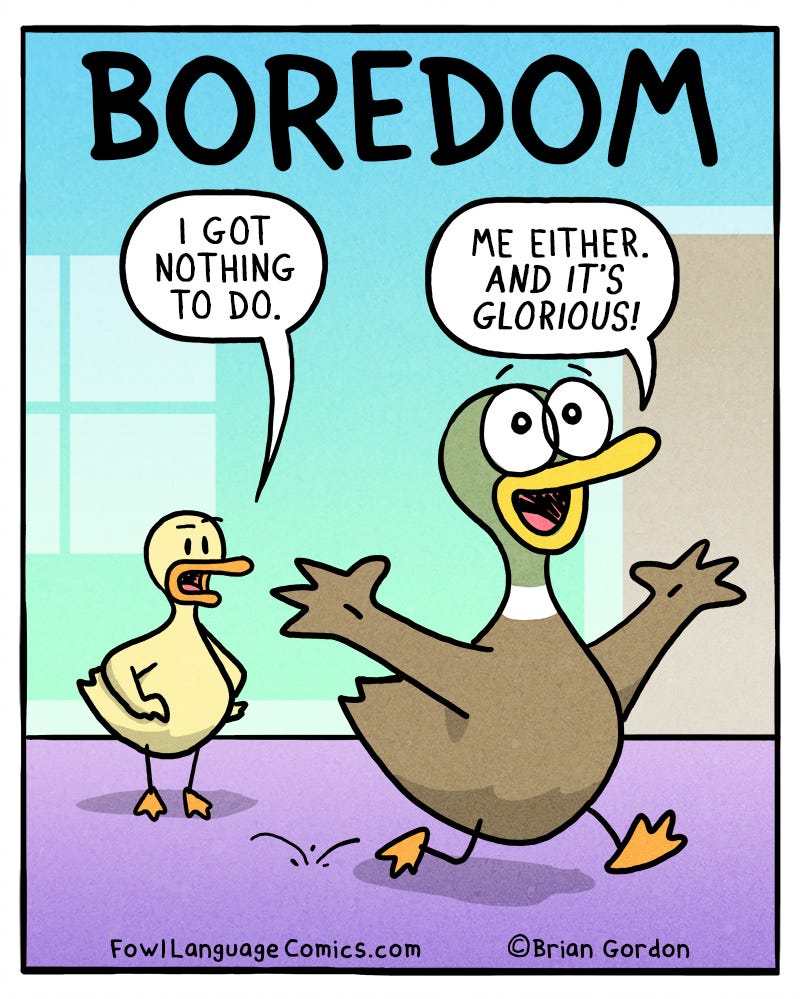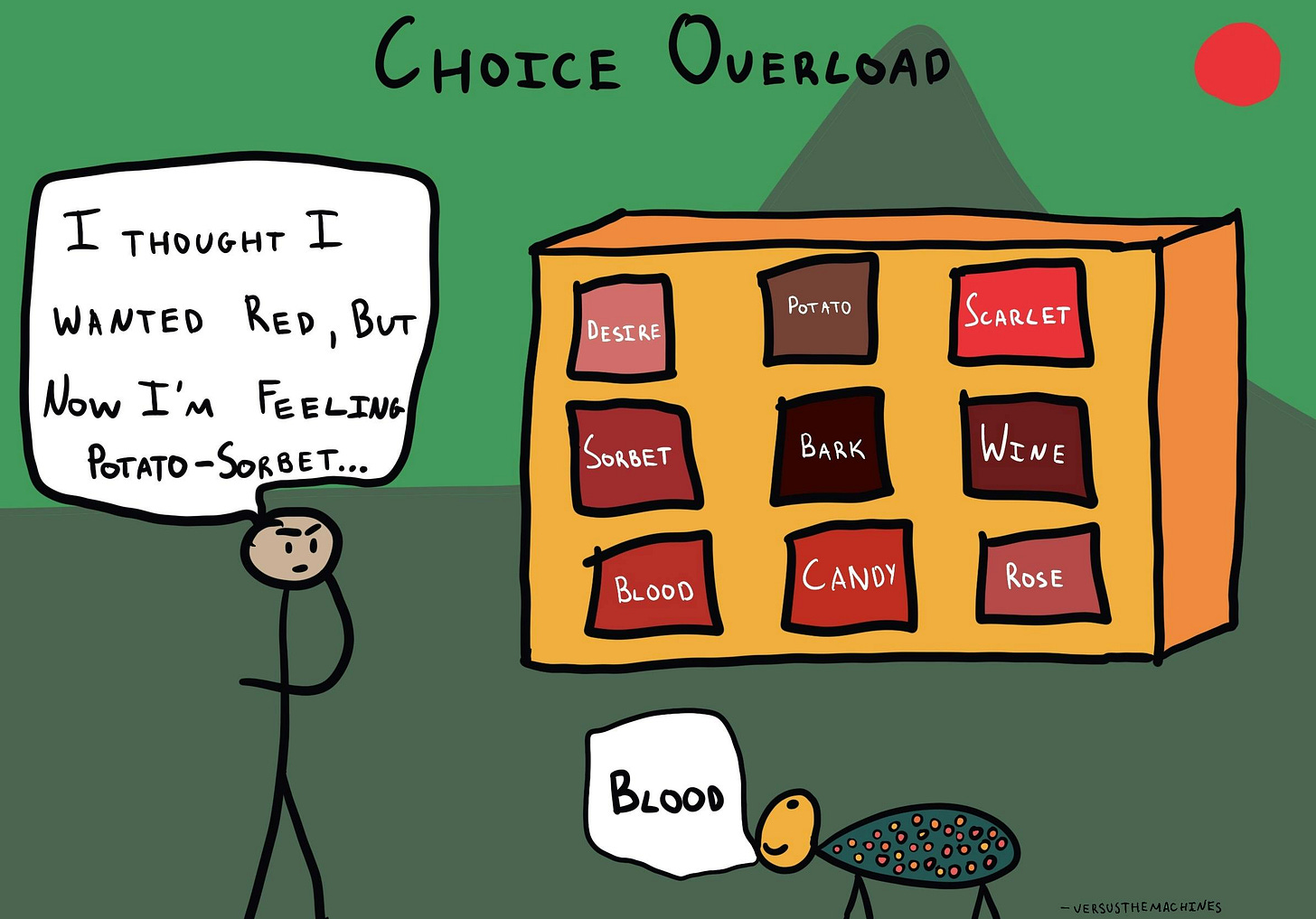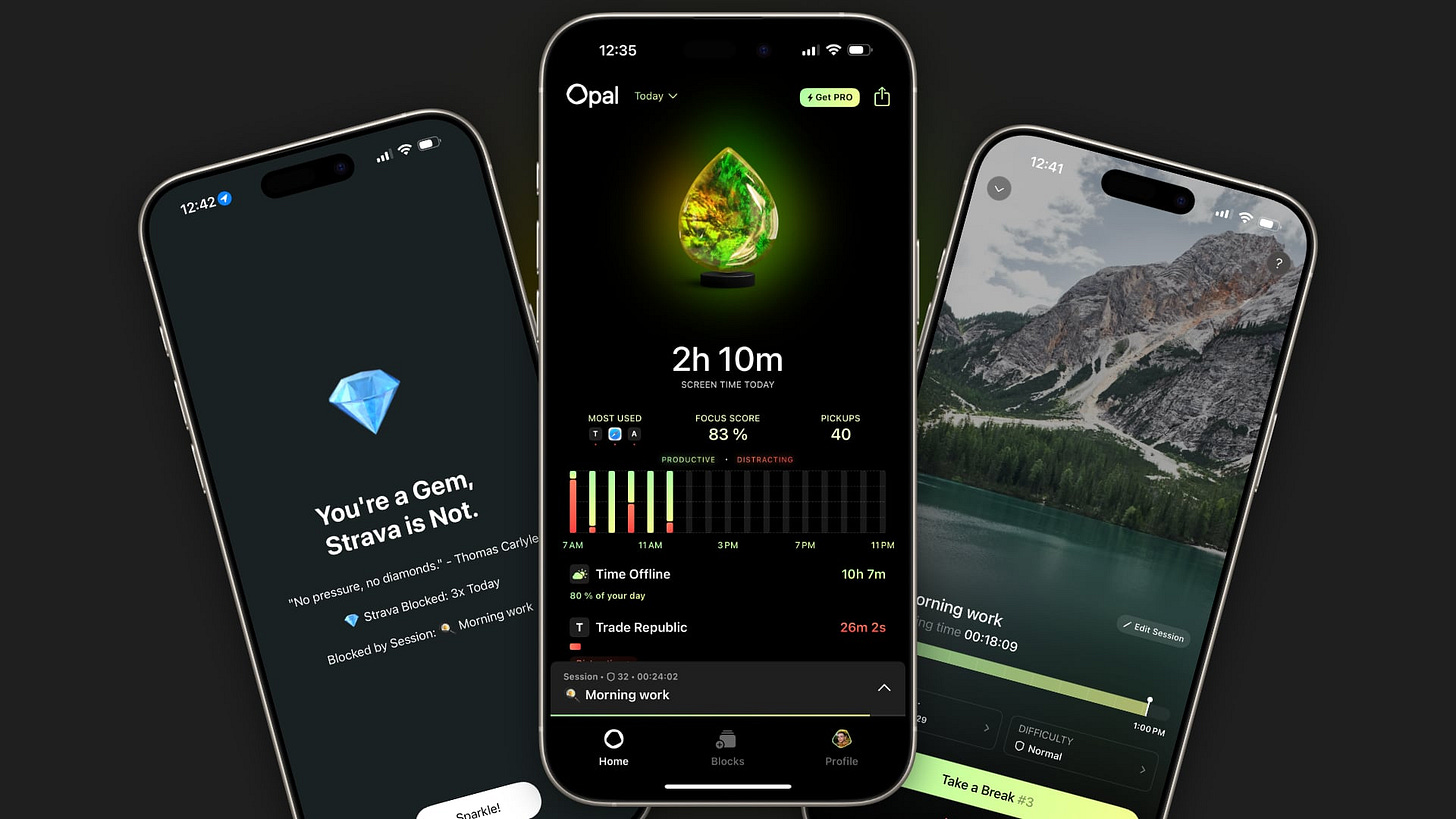Reintegrating my phone into my life
After a month of leaving my phone at home + the Friday Wholesome Corner!
It has now been 10 days since my phone-free March ended. For one month, I left my phone at home whenever I went out, and it was incredible. I felt calmer, more connected to the world around me, and to my surprise, I did not get bored.
I had anticipated boredom. No phone also meant no music. It meant not having something to read with me all the time. But whenever I encountered an unanticipated wait, I found myself taking in the environment, listening to my thoughts like radio, or just adhd-fidgeting with a hairband. Interestingly, I felt less bored than I would have, had I been able to flood my brain with information from social media or news websites. Maybe it was the novelty of it. I don’t know for sure, but I don’t think so. Numbing the brain with information doesn’t feel like boredom, yet it is—with a pinch of anxiety added in, so your nervous system feels like you’re doing something important.

I can only think of one situation where I wish I had brought a book, and it wasn’t due to boredom.
A pilates teacher arrived late to the studio, so I found myself waiting in the staircase with other attendees. When I started pilates, I often felt like a guest as the sole cis guy in the room, but over time, I got used to it. Now, being the only dude in the hallway, with everyone staring at their phones, I felt self-conscious. I had nothing to look at. I didn’t want anyone to be uncomfortable by thinking I was looking at them, so I awkwardly stared at the wall like a psycho or a 1980s time traveler. Maybe I’m overthinking. Without my phone, I had to actually confront these thoughts. Had I had my phone there, I would have just disappeared into it, like the rest of the people. And perhaps I never would have investigated the discomfort.
Reflecting upon it later, there’s also a part of me that feels nostalgic for the small talk that would have occurred in these settings, though I wouldn’t have participated in that instance. That small talk was an important social glue for communities to form, but it’s been replaced by WhatsApp. Oh well.
Since the experiment month ended, I’ve practically had my phone with me most of the time. I’m more conscious of my usage, though, and it doesn’t find its way into my hands quite as often. Here are some of the situations I’ve encountered.
Friends
I’m struck by how absolutely normal it is for people to take out their phone and to start looking things up. It pauses the conversation. It makes it feel like the other person has gone into their phone for a moment, almost like leaving the room despite being right there. But instead of excusing ourselves, like when we go to the bathroom, when it comes to looking stuff up, it’s something we just tend to do.
I hadn’t noticed this dynamic of separation as clearly before. I didn’t think much of it. So I don’t fault anyone for doing it. In most social contexts, it doesn’t go against any norms.
In the past, if a friend took longer than a few seconds while browsing menus on Uber Eats, searching for a good bar or restaurant on Google Maps, or digging through a Wikipedia page, I’d jump on my phone, too. Now, I don’t want to do that. Which makes me more cognisant of this behaviour. In general, I think we reach for our phones too fast. It’s convenient to look at the options straight away instead of first stopping to think and chat about what we want. I haven't noticed that using phones makes our decisions any faster or better, so separating ourselves and forcing ourselves through overchoice seems like a pointless price to pay.
Music
A big part of this experiment was not having music with me. Before I had a smartphone, I had an MP3-player, before that, a minidisc, a discman, and a walkman. Music was everywhere for me.
Now that the month is over, I’ve brought music back. But I don’t think it’s an improvement. In the past, I felt that choosing between audiobooks or music was tough. Now, I have a third option. The decision often feels less like I’m choosing for something, but rather like a choice to take something away. Instead of choosing to hear the world, it feels like “I will not listen to music,” or vice versa: “I will not be open to the sounds of the world.”
The conclusion, for now, is that I found something new to listen to: the world. Something just as exciting as one of my life’s biggest passions. I’ll have to figure out a balance.
Screentime
I gave myself carte blanche for smartphone use at home in the month of the experiment. Now that I can use my phone any time, anywhere, I want to introduce a bit more balance.
One of my favourite aspects of the experiment was all the conversations it opened. In one chat with composer & sound designer Haraldur Thrastarson (I think I’m ok to call him Halli), he shared his experience. He had started using a screen time management app called Opal that was working really well for him. Apps like Opal add a few barriers between you and apps and websites that you’ve chosen to block. This way, a little friction is added, so you can think twice about whether you really want to check the news, Reddit, Instagram, whatever. In the past, I’ve found myself bypassing these barriers repeatedly. Eventually, that conscious bypassing turned into subconscious behaviour. So then, all the screen time management app did for me was slow me down in what I was going to do anyway. This time, it’s different.
Screen time management apps have come a long way. The last time I tried them must have been prior to 2021. Since then, Apple has opened up its Screen Time limiting features to third-party developers via an API. This means that developers have far better ways to have their apps track & manage your usage. The difference is night and day, and these apps now have many subtle ways of nudging your behaviour.
When I tried screen time management apps previously, I came at it with a poor attitude. Instead of addressing my problem, I tried to fight the symptoms. I wanted to be more disciplined and more productive without managing and channeling my attention. Now, after one or two years of regular exercise, a habit of stepping out of my comfort zone, and learning about ADHD, I’m able to approach this with clear intention. I now do it because I want to do it, not because I feel I have no other choice. Sure, I’ll cheat here and there and might go rot my brain with a doomscroll while inhaling my lunch, but overall, it’s a big net positive, as I’m constantly reminded of my intention whenever I find myself slipping.
I can highly recommend giving Opal a try. Thanks, Halli, for the tip!
Note: When setting up the app, it asks you for the number of hours you spend on your phone per day. According to their research, the average is around 4. Assuming I have 40 years left, that means I’d be looking at my phone for nearly 7 years. And I’ll be asleep for 12 years. So a quarter of my waking life will be spent looking at my phone… and another (larger) chunk, looking at my laptop. Oof. So be ready for that confrontation when you install the app.
What’s next?
Now that I’m reunited with my phone, I can finally start confronting the edges of my next comfort zone. I want to start creating video content. I’ve started toying with this already—if you follow me on Instagram, you may have seen the little dance party I had in my Story posts on Tuesday evening. I’m also planning more one-month experiments, but for April, I feel that re-integrating the phone is an experiment in and of itself.
I’m currently working on a series of articles about the role that intermediary platforms play in our culture. Think Uber to connect you to drivers, food ordering apps, dating apps, gym class aggregators, hotel booking sites, streaming services. I feel it’s a topic that’s well-discussed by economists, strategists, and thinkbois on podcasts, but we’re missing meaningful language around it that can be used by laypeople, like you and me (ok, maybe I’m a bit of a thinkboi too…).
Schedule-wise, I’m thinking about more ‘journalistic’ pieces on Tuesdays and more personal angles like this one on Fridays. Those personal pieces will then also be accompanied by the Wholesome Corner to give you some good stuff to dig through on the weekend.
Stay tuned. Thank you for being with me in this early phase while I figure it all out. It’s hard work, and I’m grateful for your attention. If you like what I’m doing, you can do me a massive favour by sharing your favourite Calm & Fluffy piece with a friend.
You can find all articles here.
(• ᵔ‿ᵔ •) Wholesome Corner
From me, to you. Every Friday.
The Offline Club is an international initiative of city chapters that bring strangers together through offline activities. No phones allowed. 📵
People often draw a distinction between online and “in real life”. Internet Real Life argues that “the internet is real life” and explores this topic through a series of presentations and discussions, the first season of which you can explore via the link. 🌐
One Minute Parks takes you to parks around the world for 1 minute each. I just spent a few minutes in Parque Guinle (Rio de Janeiro), Hunter's Point South Park (Long Island City, New York), and Finsbury Park (London). It’s crowdsourced, so anyone can upload compositions from their favourite parks and share them with the world. 🌳
If visiting virtual parks and Opal as a screentime management app isn’t enough: touch grass literally makes you go outside to touch grass before you unlocking your social media apps again. And you have to evidence via your camera! 💚





